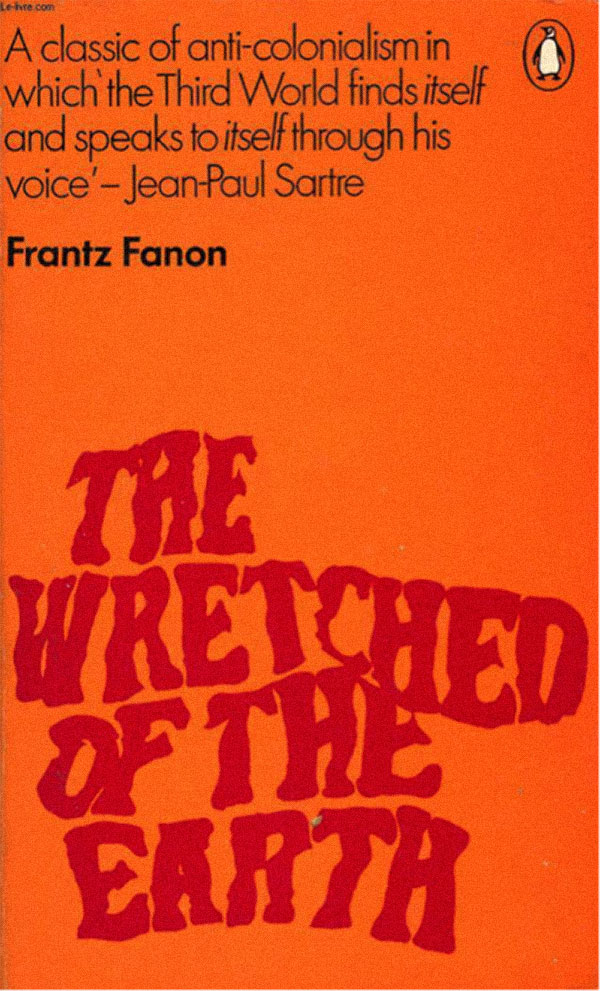This essay is a version of a lecture I gave for the art theory course “Postcolonial Theory as Cinematic Fantasy” at the New Center for Research and Practice, Fall 2019. See also Serubiri Moses, “Notes on Postcolonial Theory as Cinematic Fantasy,” Arts.Black, December 15, 2015 →. The title “Violent Dreaming” is a play on the title of K. Sello Duiker’s novel The Quiet Violence of Dreams (2001).
“Violence,” Oxford English Dictionary.
Herbert Spencer, “The Right to Ignore the State,” in Social Statics, Or, The Conditions Essential to Human Happiness Specified, and the First of Them Developed (Williams and Norgate, 1868), 230.
Georg H. W. Hegel, Philosophy of Right, trans. S. W. Dyde (Cosimo, 2008).
Hegel, Philosophy of Right.
Karl Marx, “The Circulation of Money-Capital,” Capital, vol. 2, 1893. Available here →.
Jean Jacques Rousseau, On the Social Contract, trans. C. D. H. Cole (Dover, 2003), 7.
Frantz Fanon, The Wretched of the Earth, trans. Constance Farrington (Grove Press, 1963), 39, 40.
Fanon, Wretched of the Earth, 65.
Frantz Fanon, Black Skin, White Masks, trans. Charles Lam Markmann (Pluto, 1986), 63.
Fanon, Black Skin, White Masks, 58.
Édouard Glissant, Poetics of Relation, trans. Betsy Wing (University of Michigan Press, 1997), 57.
Fanon, Wretched of the Earth, 39.
Julia Kristeva, “Fantasy and Cinema,” in Intimate Revolt: The Power and Limits of Psychoanalysis, vol. 2, trans. Jeanine Herman (Columbia University Press, 2002).
Kristeva, “Fantasy and Cinema.”
Göran Hugo Olsson, Concerning Violence: Nine Scenes from Anti-Imperialistic Self-Defense, 2014. The main title of Olsson’s film is borrowed from the title of the first chapter of Wretched of the Earth (“Concerning Violence”).
Moses, “Notes on Postcolonial Theory as Cinematic Fantasy.”
C. L. R. James, The Black Jacobins: Toussaint L’Ouverture and the Santo Domingo Revolution (Vintage Books, 1963), 15, 16.
Fanon, Wretched of the Earth, 73.
Gabriella Basterra, The Subject of Freedom: Kant, Levinas (Fordham University Press, 2015), 9.
See V. S. Naipaul, A House for Mr. Biswas (Random House, 1961); Okot p’Bitek, Song of Lawino (Heinemann Educational Publishers, 1966); Chinua Achebe, Things Fall Apart (Heinemann Educational Publishers, 1958); and Chinua Achebe, No Longer at Ease (Heinnemann Educational Publishers, 1960).
Fanon, Wretched of the Earth, 43.
Fanon, Wretched of the Earth, 86.
Basterra, The Subject of Freedom, 8.
Basterra, The Subject of Freedom, 8.
Basterra, The Subject of Freedom, 8.
Kristeva, “Fantasy and Cinema.”
Fanon, Wretched of the Earth, 264.
“It was a matter of finding out whether we had to deal with an unconscious guilt complex following on the death of the mother, as Freud has described in Mourning and Melancholia.” Fanon, Wretched of the Earth, 262.
Fanon, Wretched of the Earth, 264.
Fanon, Wretched of the Earth, 264.
Gayatri Chakravorty Spivak, “Preface to Concerning Violence,” Film Quarterly 68, no. 1 (Fall 2014).
Kristeva, “Fantasy and Cinema.”
Basterra, The Subject of Freedom.
Fanon, Wretched of the Earth, 261–64.
Mahmood Mamdani, “Making Sense of Postcolonial Violence in Postcolonial Africa,” in Experiments with Truth: Transitional Justice and the Processes of Truth and Reconciliation: Documenta 11_Platform 2, eds. Okwui Enwezor et al. (Hatje Cantz, 2002).
David Pellauer and Bernard Dauenhauer, “Paul Ricoeur,” Stanford Encyclopedia of Philosophy, 2016 edition →.
Pellauer and Dauenhauer, “Paul Ricoeur.”
